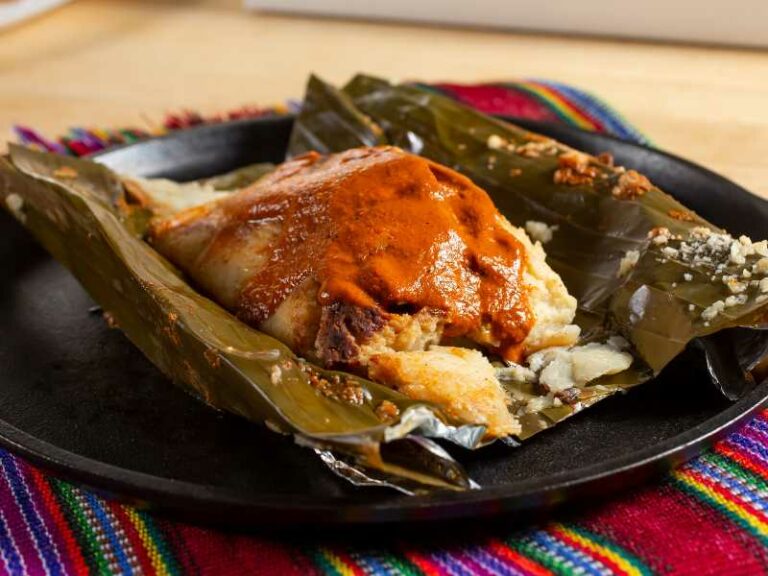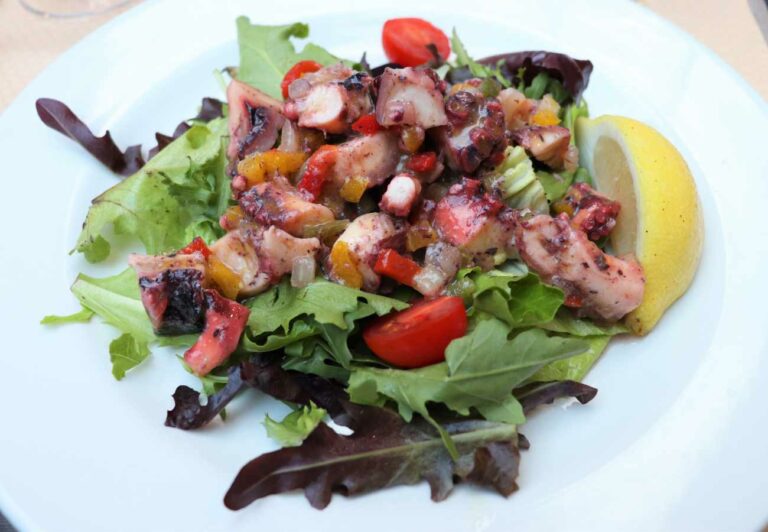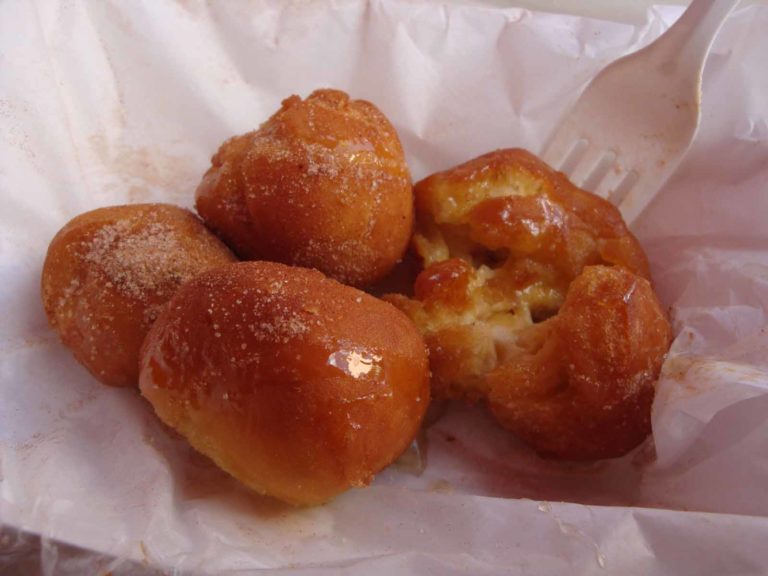Costa Rican Food: 12 Traditional Dishes of Costa Rica
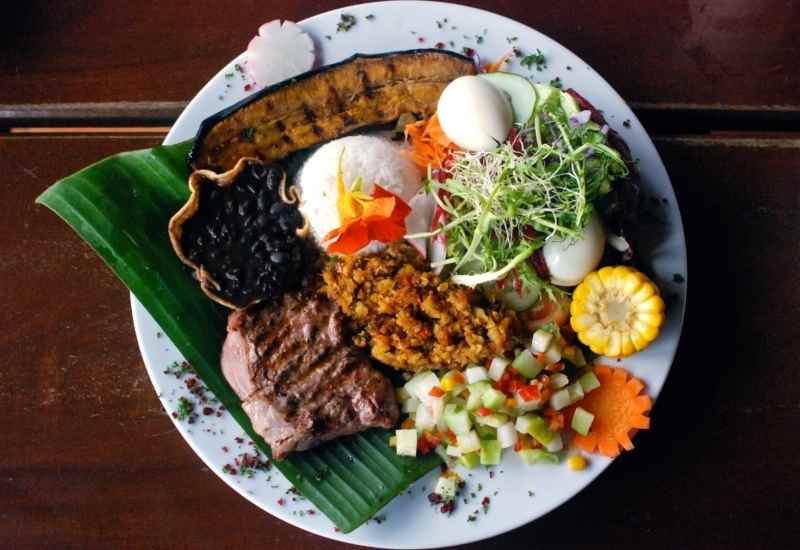
Costa Rica is a Central American country bordered by Nicaragua and Panama, with the Caribbean Sea to the east and the Pacific Ocean to the west.
Costa Rica is a popular tourist destination due to its natural landmarks, including the Arenal Volcano National Park and Manuel Antonio National Park, its historic landmarks such as Guayabo de Turrialba, and its vibrant culture.
Costa Rica gained independence from Spain in 1821, joined the Central American Federation, before becaming fully independent in 1838.
Costa Rican cuisine has been shaped by indigenous, Spanish, and Afro-Caribbean influences. Rice, beans, and plantains are staple ingredients in many recipes, as are papaya and yuca (cassava).
Seafood is especially popular along the coasts, and is often featured in dishes like ceviche.
Gallo Pinto (Rice and Beans)
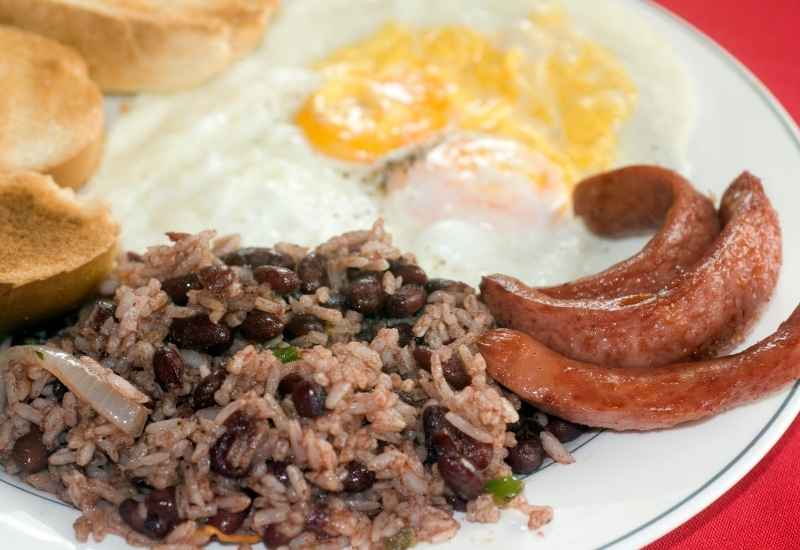
Gallo Pinto is a breakfast dish made with rice and beans which are mixed together with red bell peppers, cilantro, sauteed onions, and Salsa Lizano.
This dish is often served with eggs and sour cream on the side.
Olla de Carne (Beef Stew)
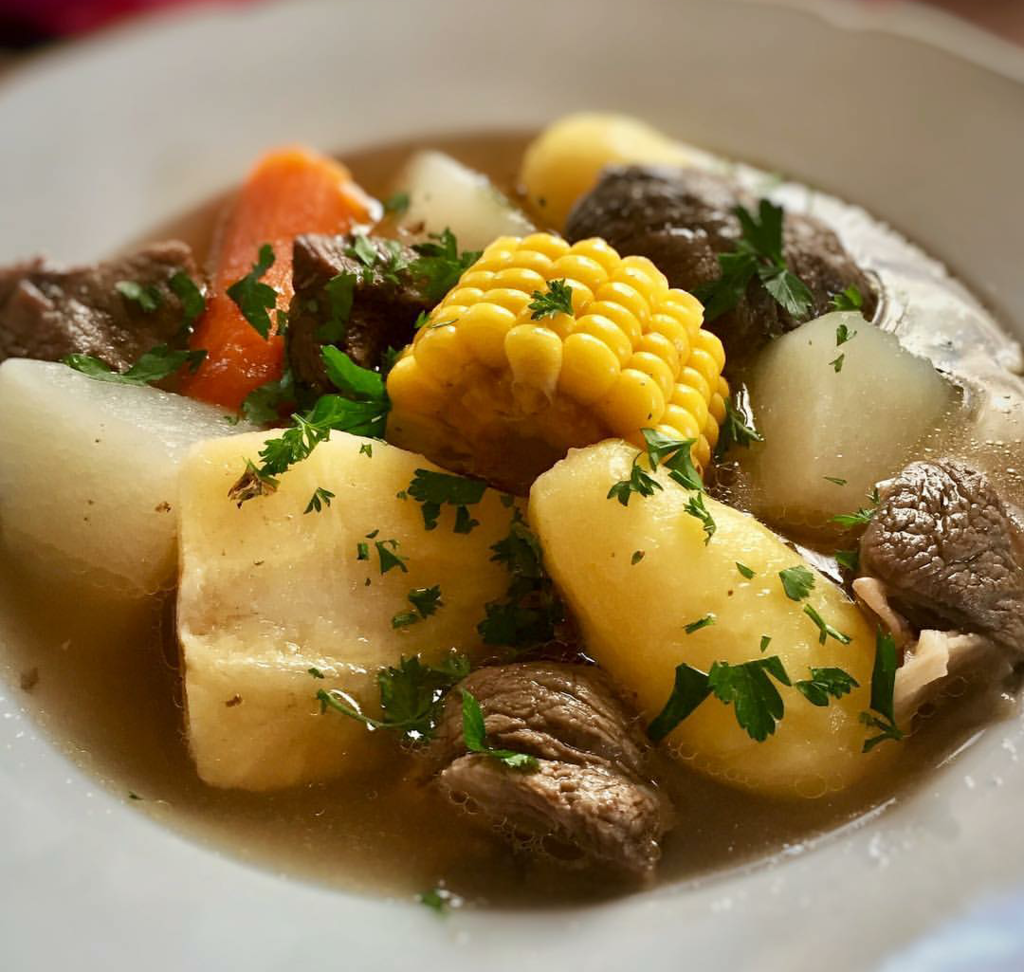
Olla de carne is a hearty stew containing beef ribs, squash, corn, sweet potato, chayote, and a handful of herbs and spices. It is commonly served with a side of white rice and flour tortillas.
Olla de carne dates back to the Spanish colonization of Costa Rica when settlers arrived on the island for the first time. It is derived from the Spanish dish Olla Podrida which was brought over by the settlers.
Casado

Casado is a popular lunch dish, usually consisting of rice, beans, salad, plantains, and a choice of meat, sometimes served with avocado or fried cheese. Although, the contents of this dish may vary depending on the food available and the local region.
In some regions Casado might be a rice bowl in the middle with each ingredient served separately, in other parts of the country it might be made as a stir fry with everything mixed together.
The meat is usually a local specialty, such as chicken, fish, beef, or pork. Sometimes this dish is served with a local fresh fruit choice and a spicy sauce known as Chilero Sauce to add heat and flavor.
Picadillo (Diced Vegetables)
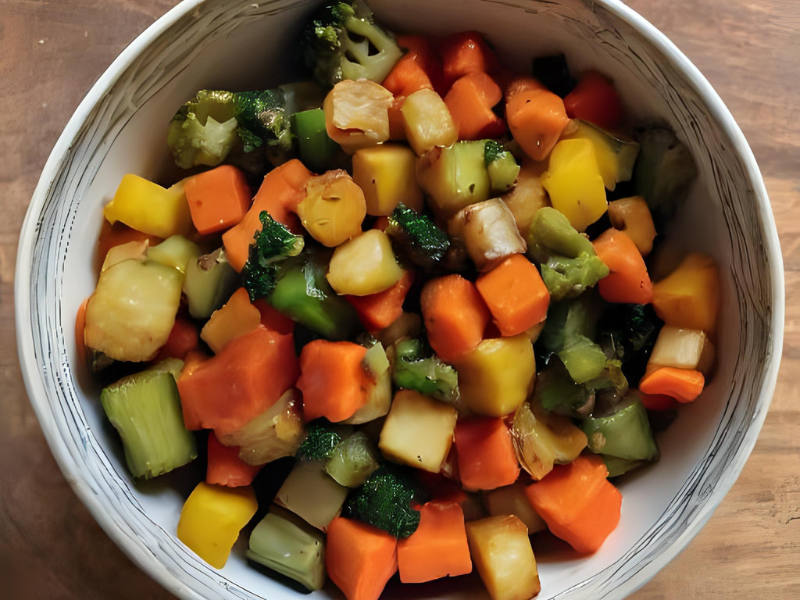
Picadillo is a common side dish in Costa Rica, made with diced veggies that are parboiled then fried. The vegetables used to make this dish are usually carrots, garlic, onions and chayote squash.
Some versions of picadillo will also include ground meat.
Rice & Beans
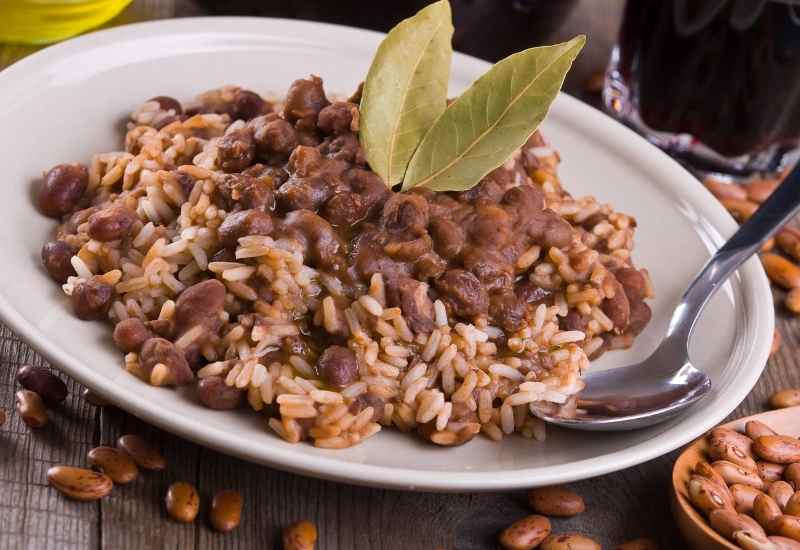
With plenty of Caribbean influences, the Costa Rican version of rice and beans contains beans and rice, as well as coconut milk, red beans, fresh thyme and spicy chilies from Panama.
Arroz Con Pollo (Rice and Chicken)
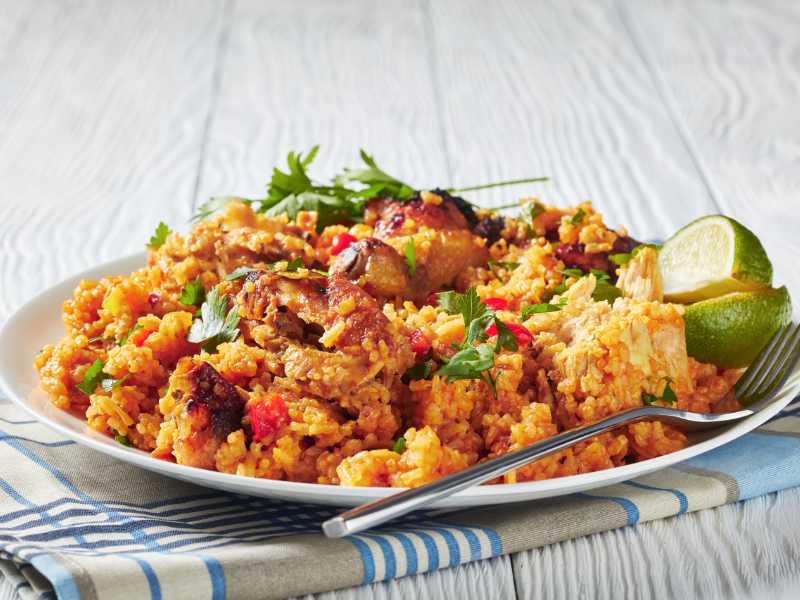
Arroz con pollo is a popular, traditional Latin American dish that combines chicken and rice with onions, bell peppers, garlic, and various seasonings such as cumin, paprika, and oregano. The chicken is simmered in a broth or tomato-based sauce until it becomes tender and infused with the rich flavors of the spices.
The rice is cooked separately and then combined with the chicken and its sauce. This allows the rice to absorb the delicious flavors from the chicken and the aromatic seasonings.
Cas Fruit
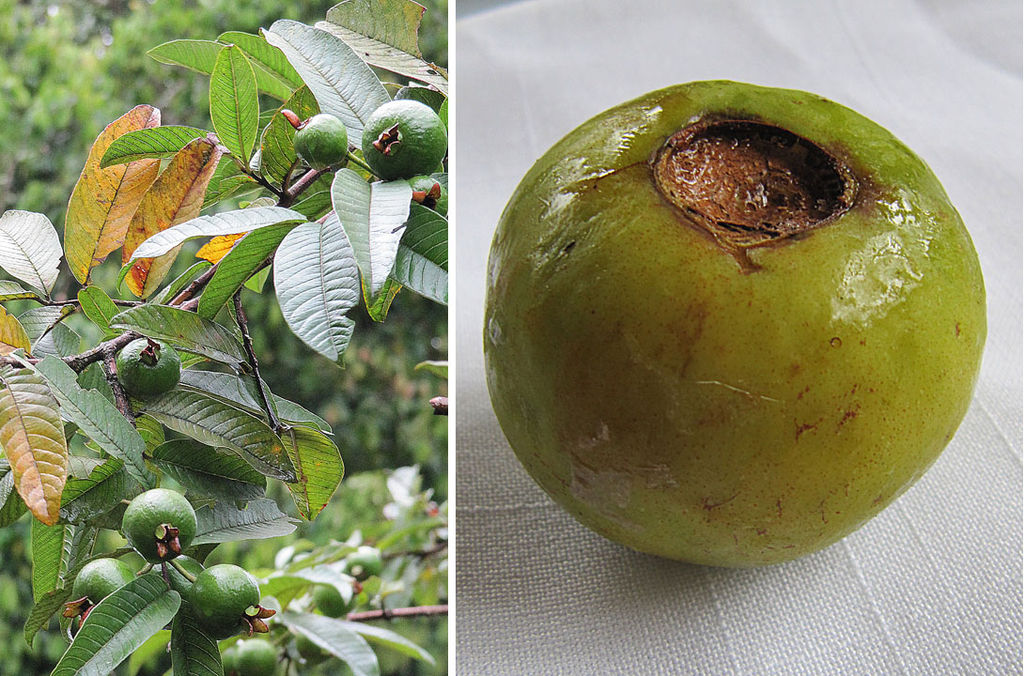
This is a unique fruit eaten widely throughout Costa Rica that is found in fresh juices, smoothies, and slushies.
Fresco de Cas is a popular Cas fruit & ice smoothie treat that is found near every beach. This fruit tends to be acidic and slightly sour by itself but can be sweet in a juice mixture and by itself actually creates a very interesting and unique taste when eaten with salt.
Majarete (Corn Pudding)
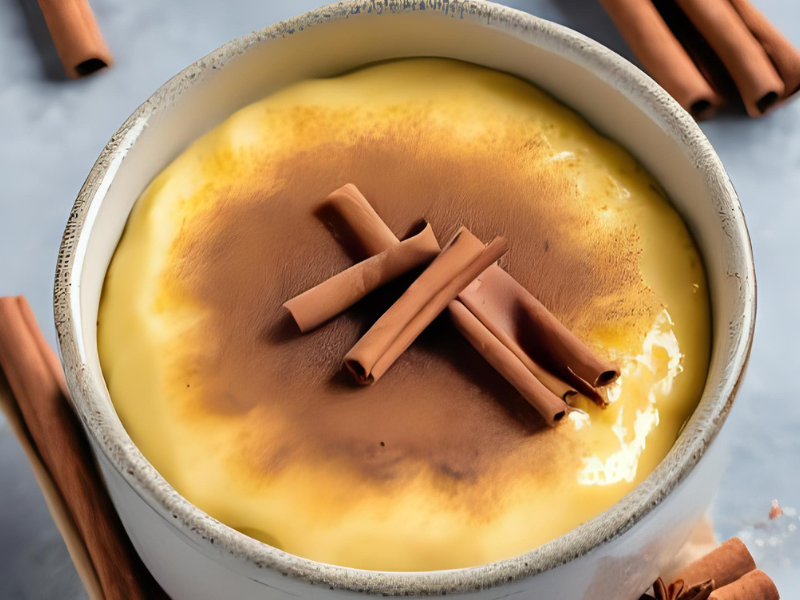
Majarete, also known as Dominican corn pudding, is a traditional dessert prepared using freshly-cut immature corn, milk (usually coconut milk) and several different spices. It is often associated with the Dominican Republic but it is also popular in Costa Rica.
This dish is creamy and smooth, and is typically served cold and garnished with ground cinnamon. Majarete is usually served for breakfast or as a dessert.
Chifrijo (Stewed Beans)
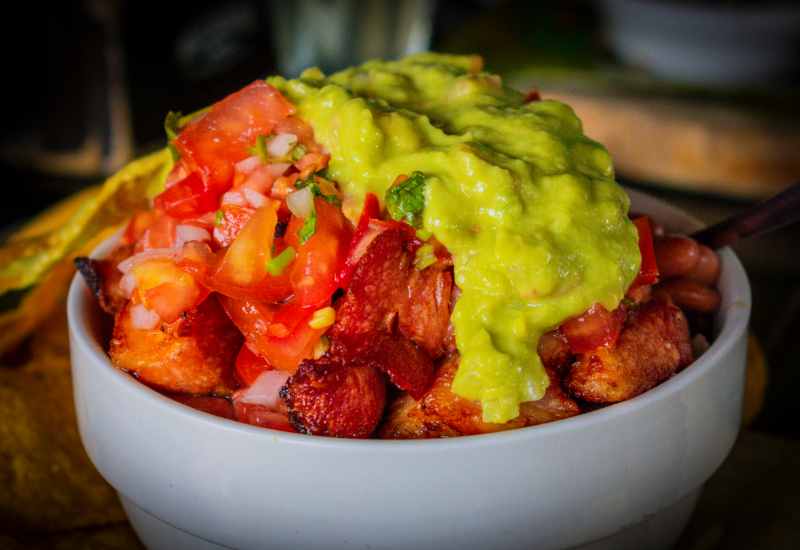
Chifrijo is made with stewed beans, white rice, pork chicharron and pico de gallo. The items are cooked separately then combined and served in the same bowl.
Chifrijo is often served with tortillas or corn chips, as well as avocados and lime wedges on the side.
Chorreadas (Corn Flour Pancakes)
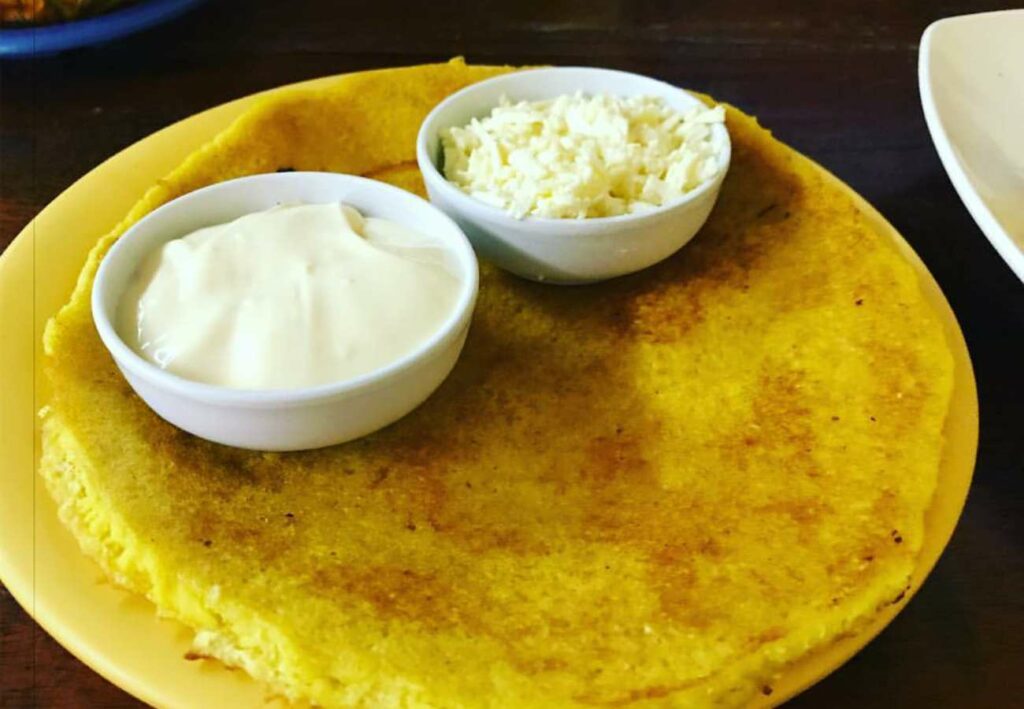
Chorreadas is a type of pancake from Costa Rica made of ground corn or corn flour, milk and eggs. This dish is often served with sweet or savory toppings. Chorreadas is a popular breakfast dish, or a snack between meals.
Bolitas
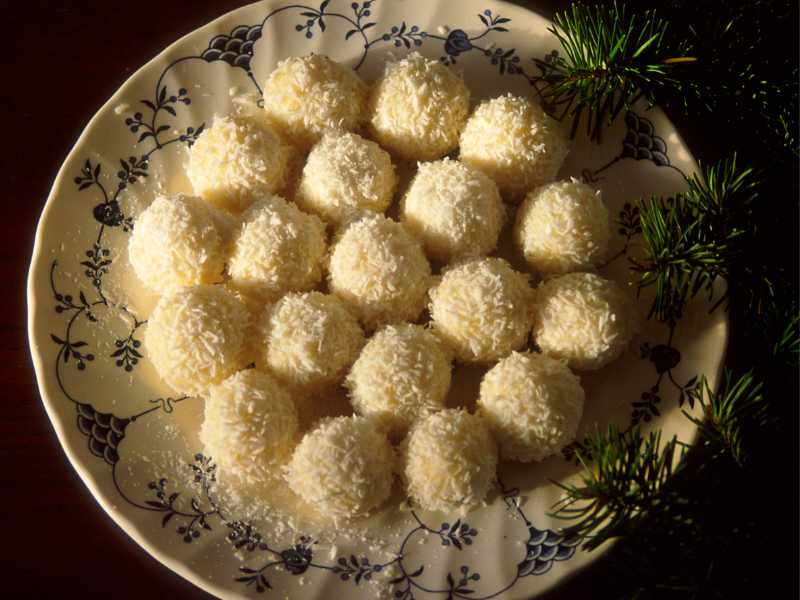
Bolitas de Coco is a confection made with butter, condensed milk and shredded coconut. The butter and condensed milk are heated up, then the coconut flakes are mixed in. The mixture is cooled slightly before rolling into small balls.
Bolitas de Coco are eaten cold as a snack, and are often found at celebrations and holidays in Costa Rica.
Rompope (Eggnog)
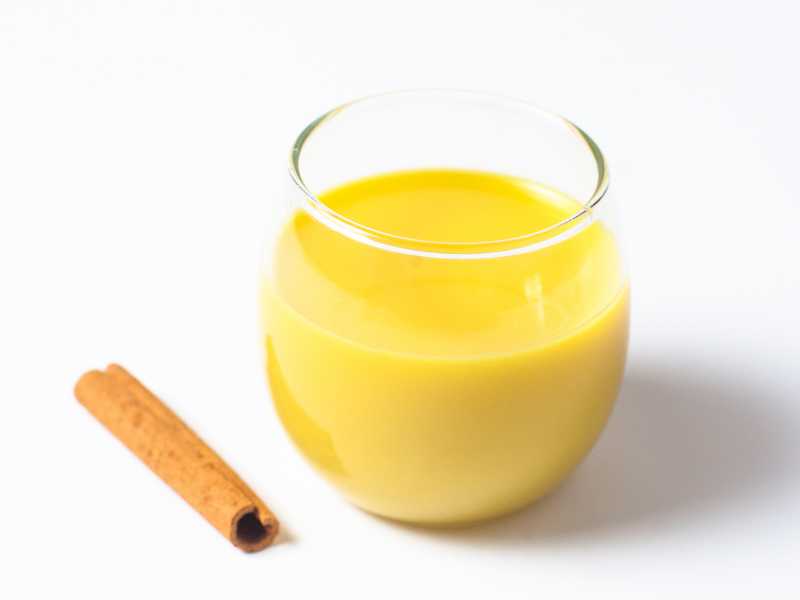
Rompope, also known as Mexican eggnog, is a dairy-based alcoholic drink similar made using milk, sugar, spices, egg yolks, vanilla and rum. The milk and sugar are heated up to infuse with the spices. The egg yolks are beaten first, before adding into the milk mixture and the alcohol is added last.
This drink is popular in many Central and South American countries, although it is most commonly associated with Mexico where it was invented.


